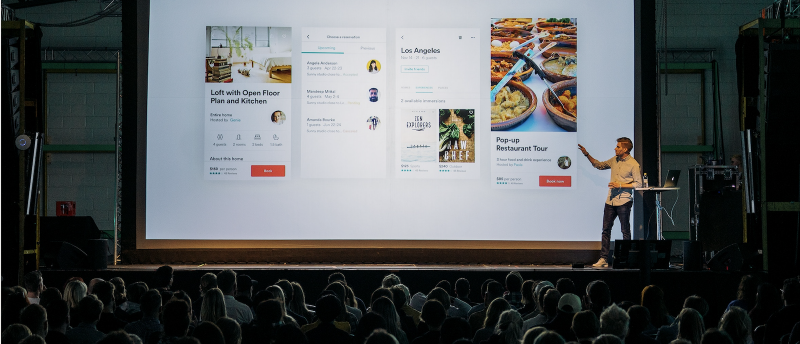 Whether your presentation involves training a team, briefing executives or pitching the purchase of a new software program, you’re challenged with developing content that influences and impacts your audience. But knowing how to approach the content can be daunting for even the most senior professional.
Whether your presentation involves training a team, briefing executives or pitching the purchase of a new software program, you’re challenged with developing content that influences and impacts your audience. But knowing how to approach the content can be daunting for even the most senior professional.
Why You Should Use Storytelling Techniques
Over the past few years, brand storytelling has been all the rage with companies and marketers looking to connect with customers — and for good reason.
Humans are empathic creatures. And as such, we respond to stories because they trigger emotion and cultivate a sense of togetherness. Creating a connection during a presentation allows for greater influence on your listeners — and a far less uncomfortable experience for the presenter.
Science supports the power of storytelling. Cognitive psychologist Jerome Bruner suggests we are 22 times more likely to remember a fact when it has been wrapped in a story. Stories also activate a process called neural coupling, in which listeners turn the story into their own ideas and experiences, making the information even more memorable and impactful. So where do you start?
Begin with the End in Mind
Are you teaching a new skill, presenting the outcomes of your latest project or trying to convince a team to implement a new process? What action do you want your audience to take? Setting a clear intention for what you want your audience to think or feel after your presentation will help ensure that you craft the right story, and make it easier to avoid including the unneeded information and bullet points that overcrowd slides and detract from audience engagement.
Christopher Booker, in his book “The Seven Basic Plots: Why We Tell Stories,” asserts that all stories employ one of seven plot structures. Choose one of the seven structures to solidify your outline and decide on what details and data points support that structure.
- Overcoming a Monster
- Rags to Riches
- Voyage and Return
- The Quest
- Comedy
- Tragedy
- Rebirth
Use Stories to Engage Your Audience and Personalize Data
“Once upon a time, there was a mid-career IT project manager at an agency charged with managing a software upgrade that would impact one-third of his agency’s workforce…”
Stories immediately grab your audience’s attention and can bring them back to attention throughout particularly long or data-driven presentations. Weaving personalized details about the main characters of your presentation will activate the neural coupling process and help your audience stay engaged.
Nothing says “snooze” like a deck of packed slides replete with charts, graphs and tables without context. Instead of making your audiences suffer through boring numbers and facts, use stories to humanize the numbers — making the data more meaningful, easier to remember and creating a persuasive narrative that drives your audience toward your intended action.
“The End.”
Myeisha Thompson is a senior content strategist who is passionate about helping organizations build and sustain meaningful relationships with their audiences through the power of clear, engaging content across digital and offline channels. She currently works as a Communications Specialist for Tantus Technologies, Inc. as a member of the PM3 contract supporting technology initiatives at the Centers for Medicare and Medicaid Services.





Leave a Reply
You must be logged in to post a comment.